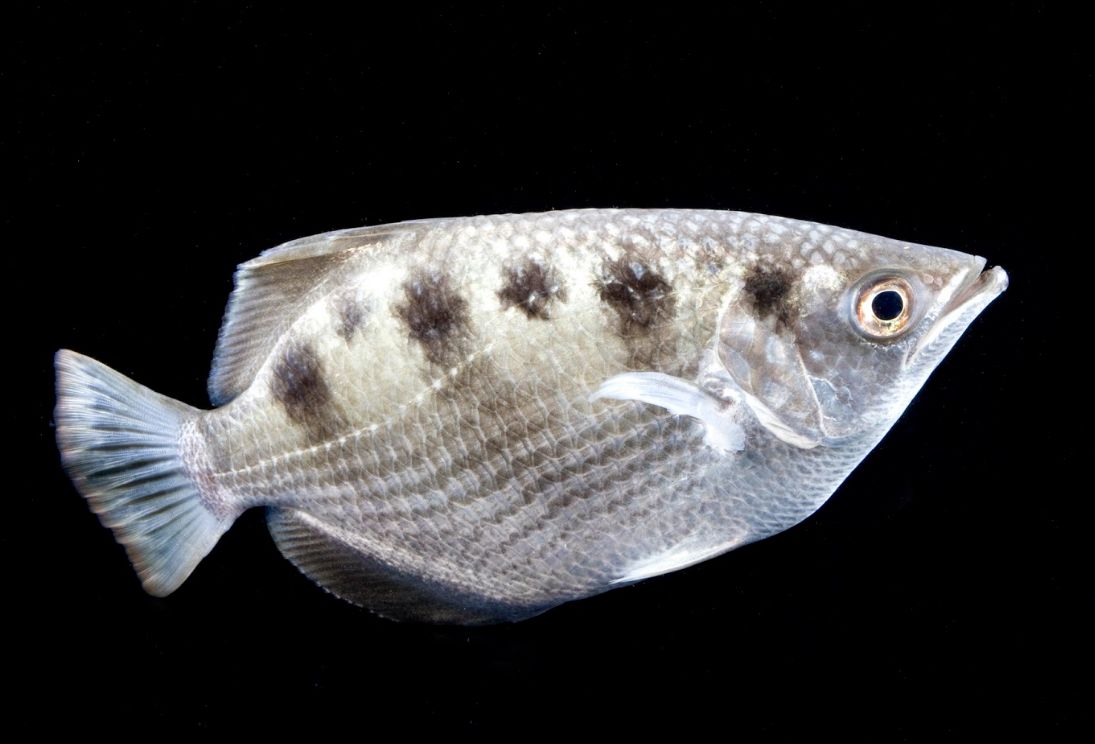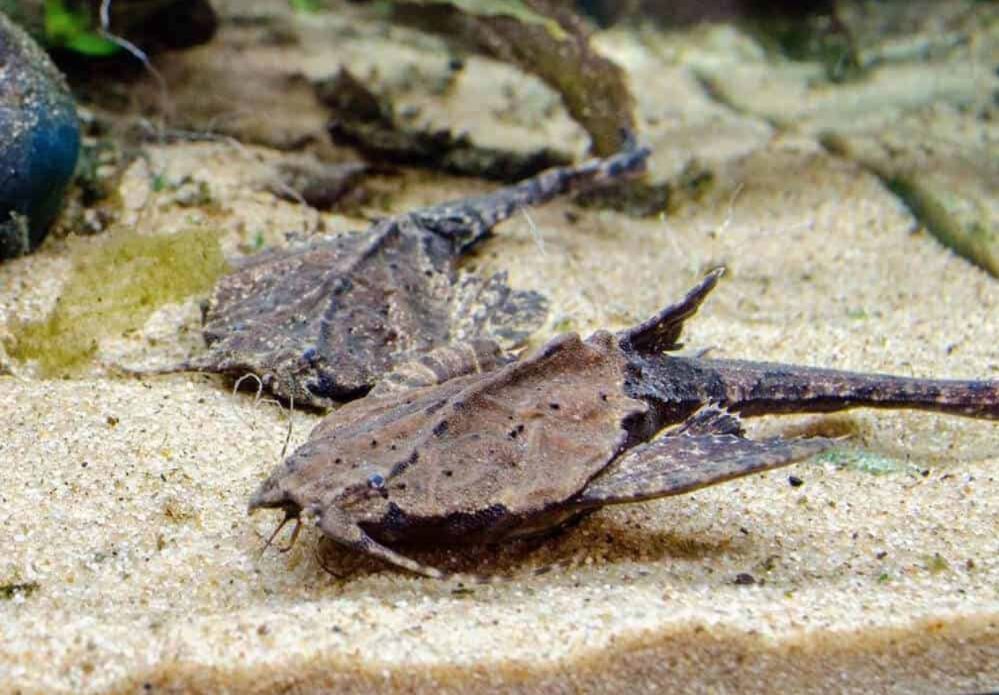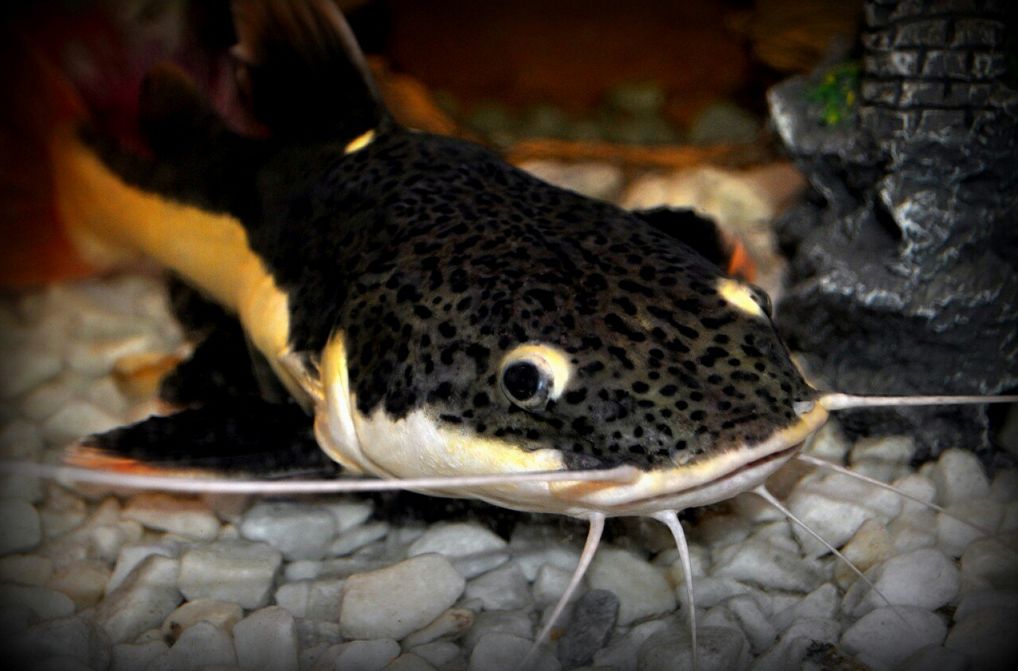Archer fish (lat. Toxotidae) belongs to ray-finned fishes of monotypic family Toxotidae, that in order to feed spray water in the air or on the ground to shoot down insects and then eat them. The droplets hit so hard that insects fall into water, where they are quickly eaten by the fish. It seems that the fish faultlessly knows where its prey falls and goes there fast before other fish gets it or it will be carried away by the water flow. Besides, archer fish similar to silver arowana can jump out of water to catch its prey, though not very high, just at its body length.



